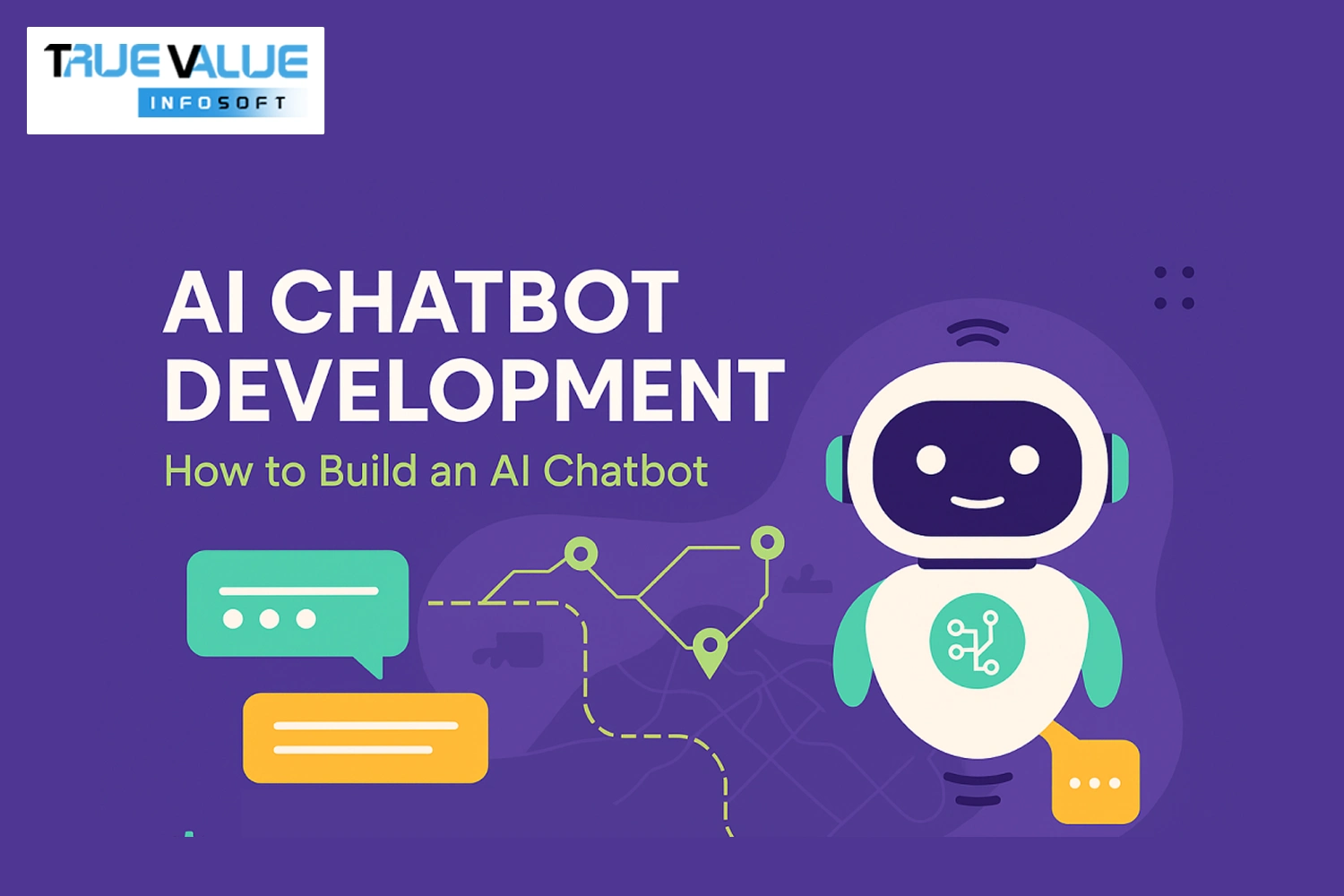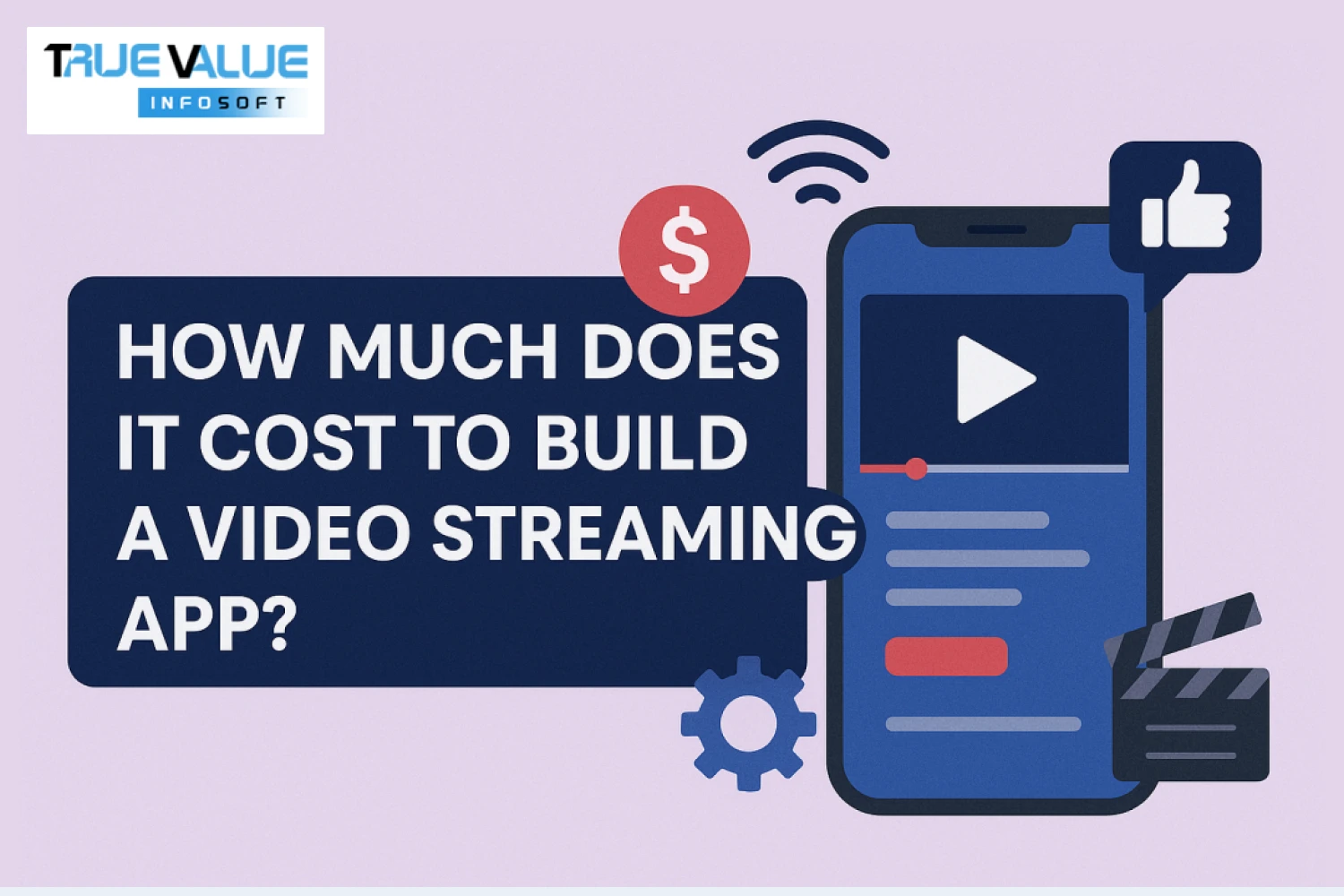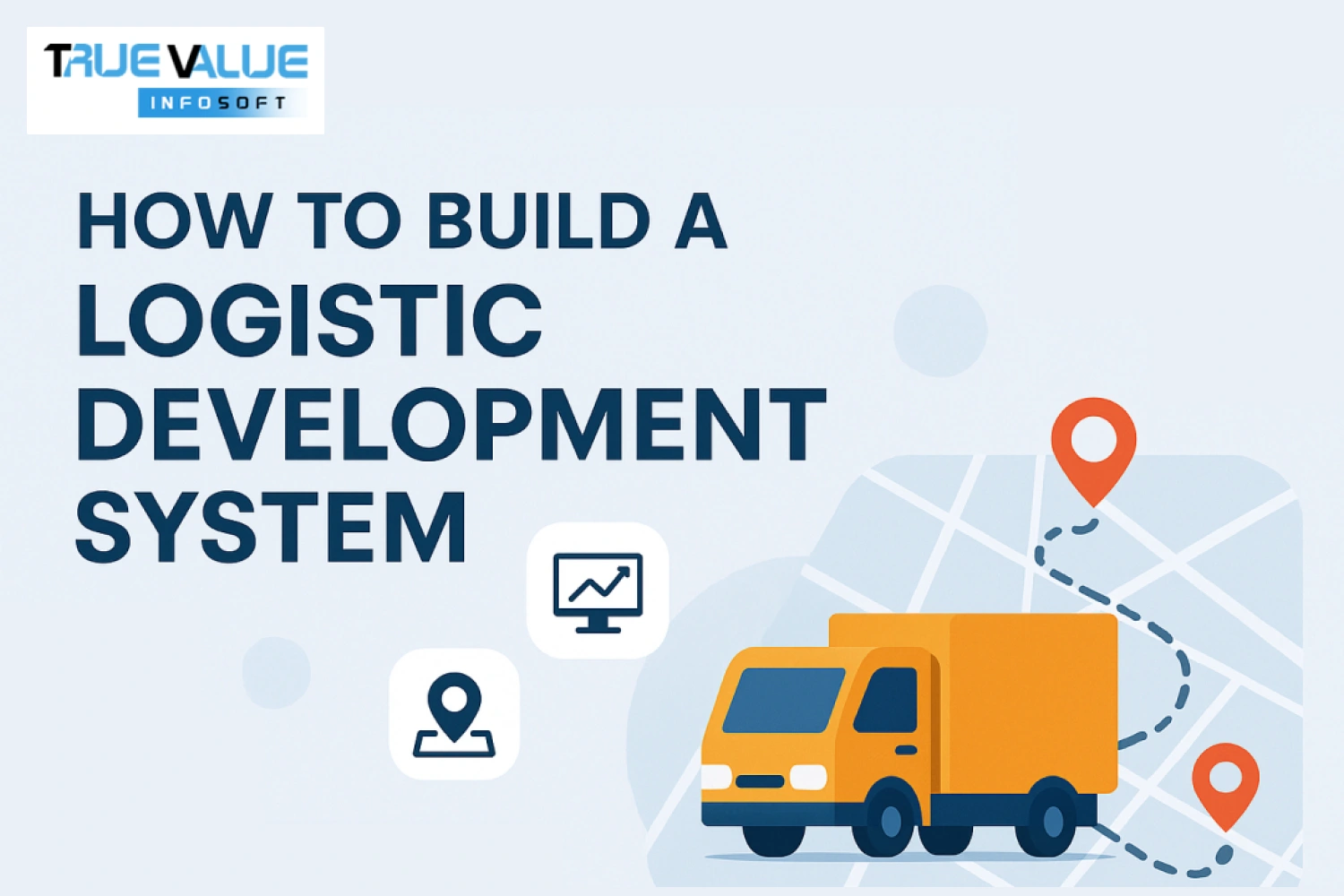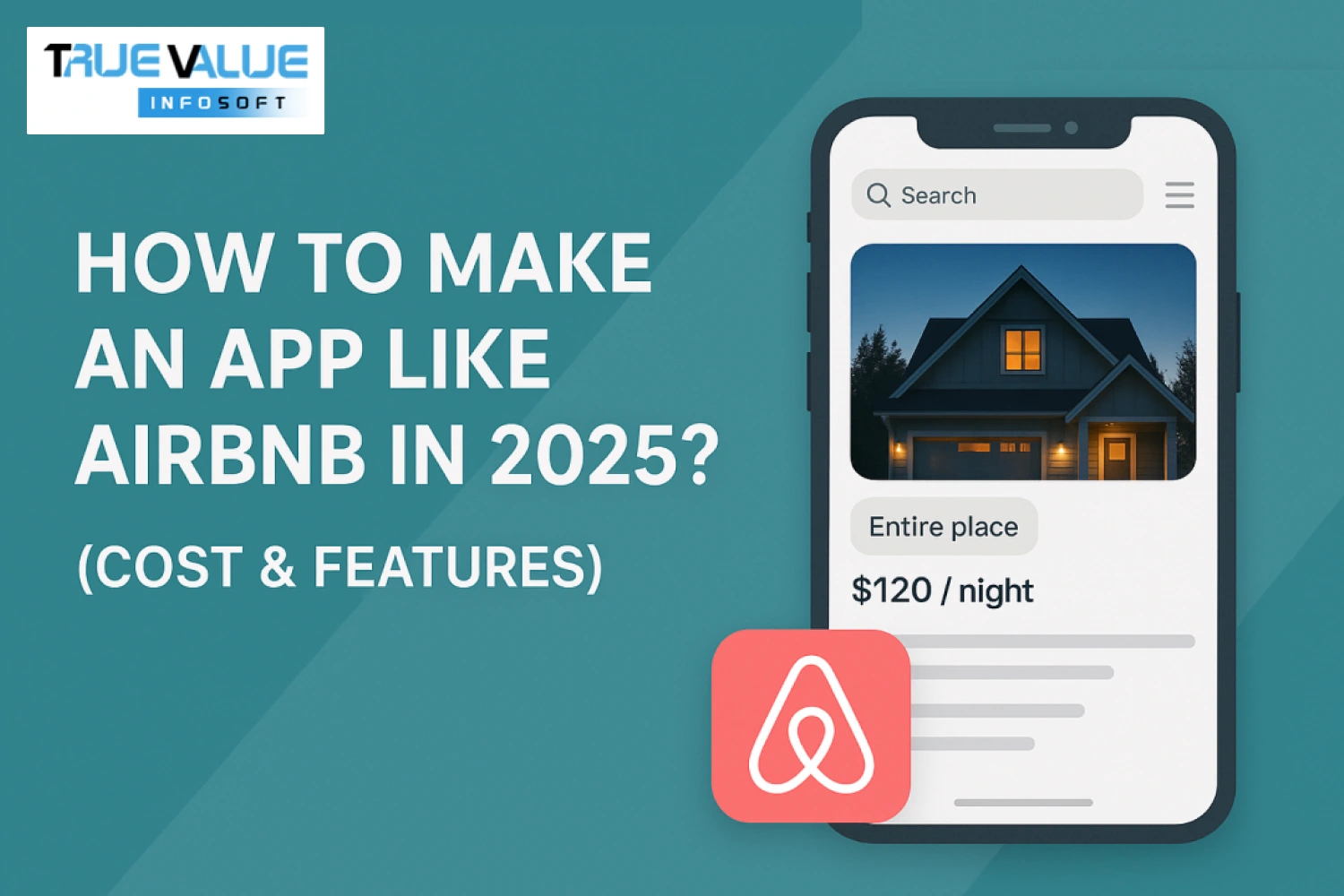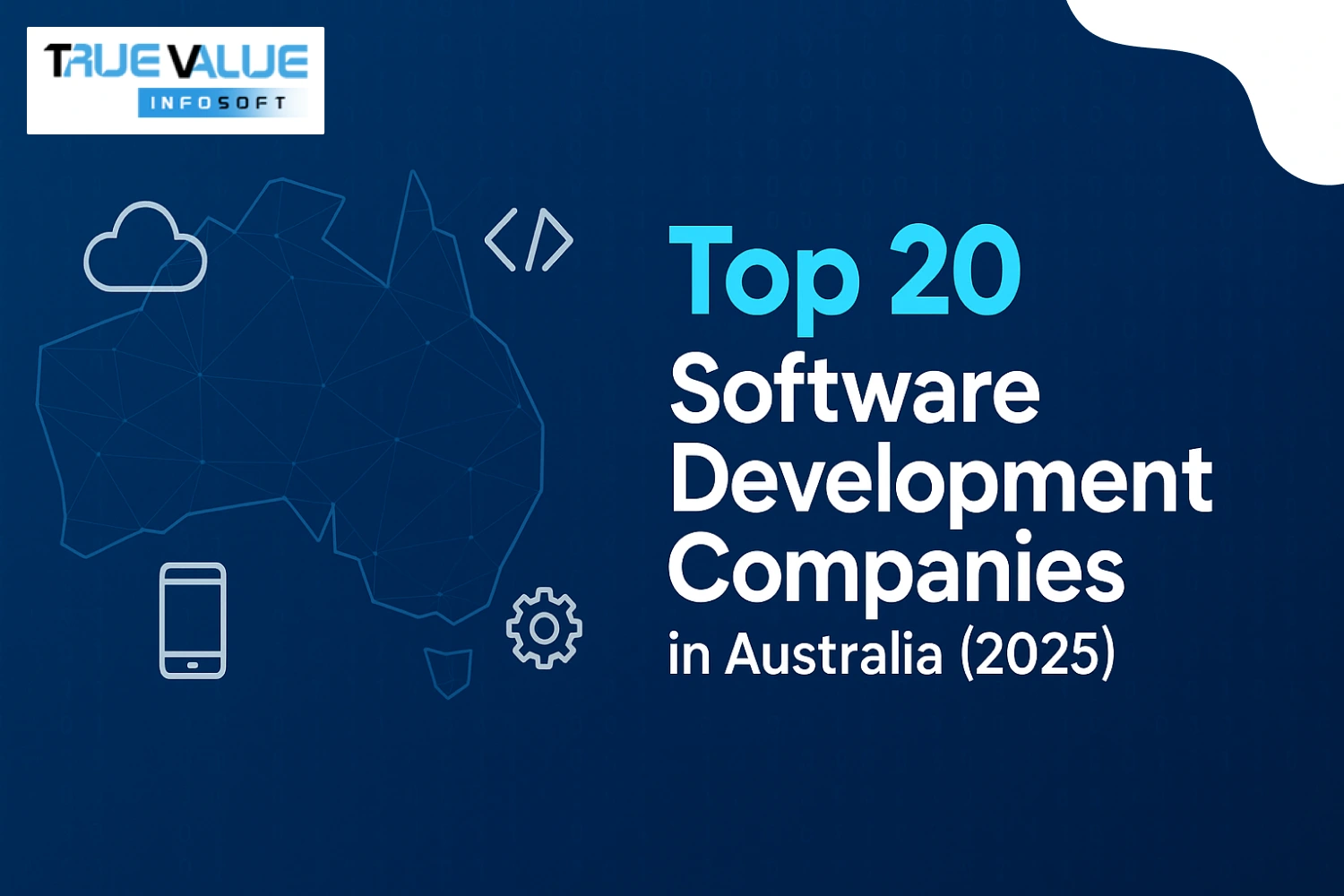Introduction
Are you wondering how to build a smart AI chatbot that can streamline your business operations and enhance customer engagement in 2025? In today’s fast-paced digital world, AI chatbots have become a game-changer for businesses aiming to deliver quick, consistent, and intelligent user experiences. From handling customer queries to automating sales, AI chatbots have redefined how companies interact with customers. Whether you're a startup or an enterprise, incorporating chatbot technology can offer you a competitive edge.
But developing an effective AI chatbot requires deep technical expertise, robust architecture, and a well-structured development process. That’s where choosing the right development partner becomes crucial. True Value Infosoft, the best app development company in India, stands out with its industry-leading expertise, AI development capabilities, and a proven track record of building intelligent chatbot solutions tailored to business needs.
In this blog, we’ll take a deep dive into what an AI chatbot is, explore its top features, understand the development process, discuss trending topics around chatbots, and show you why True Value Infosoft should be your go-to partner for AI chatbot development.
What is an AI Chatbot?
An AI chatbot is a software application powered by artificial intelligence (AI), machine learning (ML), and natural language processing (NLP) technologies to simulate human-like conversations with users. Unlike traditional rule-based bots, AI chatbots understand intent, context, and emotions, enabling them to deliver more personalized and efficient interactions.
AI chatbots can be integrated into websites, mobile apps, messaging platforms (like WhatsApp, Facebook Messenger), and customer service tools. They can handle queries, provide product recommendations, schedule appointments, process payments, gather feedback, and much more — all in real time.
AI chatbots learn from every interaction, becoming smarter and more intuitive over time. With advancements in generative AI and NLP in 2025, today’s chatbots are more powerful than ever, supporting voice, video, and multilingual communication.
Types of AI Chatbots:
- Rule-Based Chatbots: Follow predefined scripts or decision trees.
- Machine Learning Chatbots: Use AI/ML algorithms to learn from data and evolve.
- Generative AI Chatbots: Utilize large language models (LLMs) to generate human-like responses.
Key Features of AI Chatbots
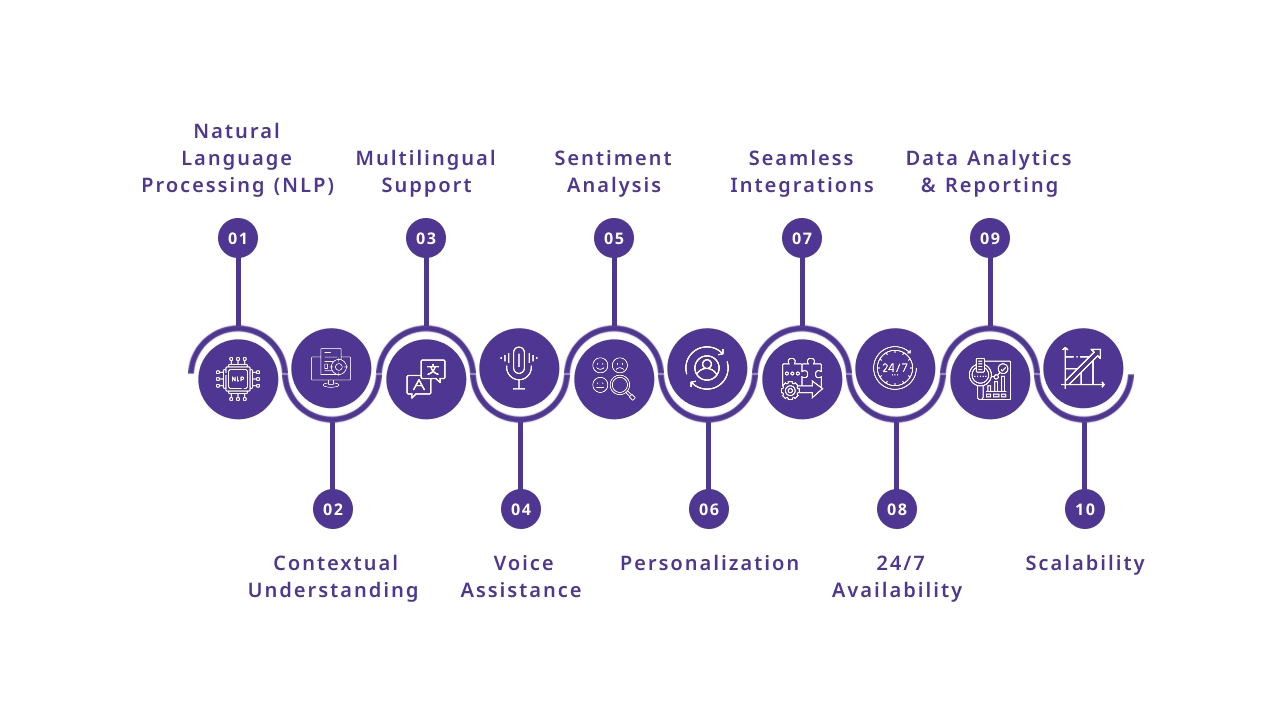
AI chatbots in 2025 come packed with advanced features that enhance user experience, increase efficiency, and drive business growth. Here are some of the top features:
1. Natural Language Processing (NLP)
Enables the chatbot to understand and interpret human language, including slang, spelling errors, and regional dialects.
2. Contextual Understanding
Maintains the context of conversations, allowing for multi-turn dialogues that feel more natural and human-like.
3. Multilingual Support
AI chatbots can converse in multiple languages, making them ideal for global audiences.
4. Voice Assistance
Voice-enabled chatbots allow users to interact through speech, improving accessibility and convenience.
5. Sentiment Analysis
Detects user emotions like happiness, anger, or frustration to tailor responses appropriately.
6. Personalization
Uses customer data and past interactions to provide personalized recommendations and responses.
7. Seamless Integrations
Integrates easily with CRM systems, payment gateways, ERP software, calendars, and third-party APIs.
8. 24/7 Availability
AI chatbots offer round-the-clock support, ensuring your business never misses a lead or customer query.
9. Data Analytics & Reporting
Captures and analyzes conversation data for performance tracking and business insights.
10. Scalability
Can handle thousands of simultaneous interactions without performance drops.
Process to Build an AI Chatbot App
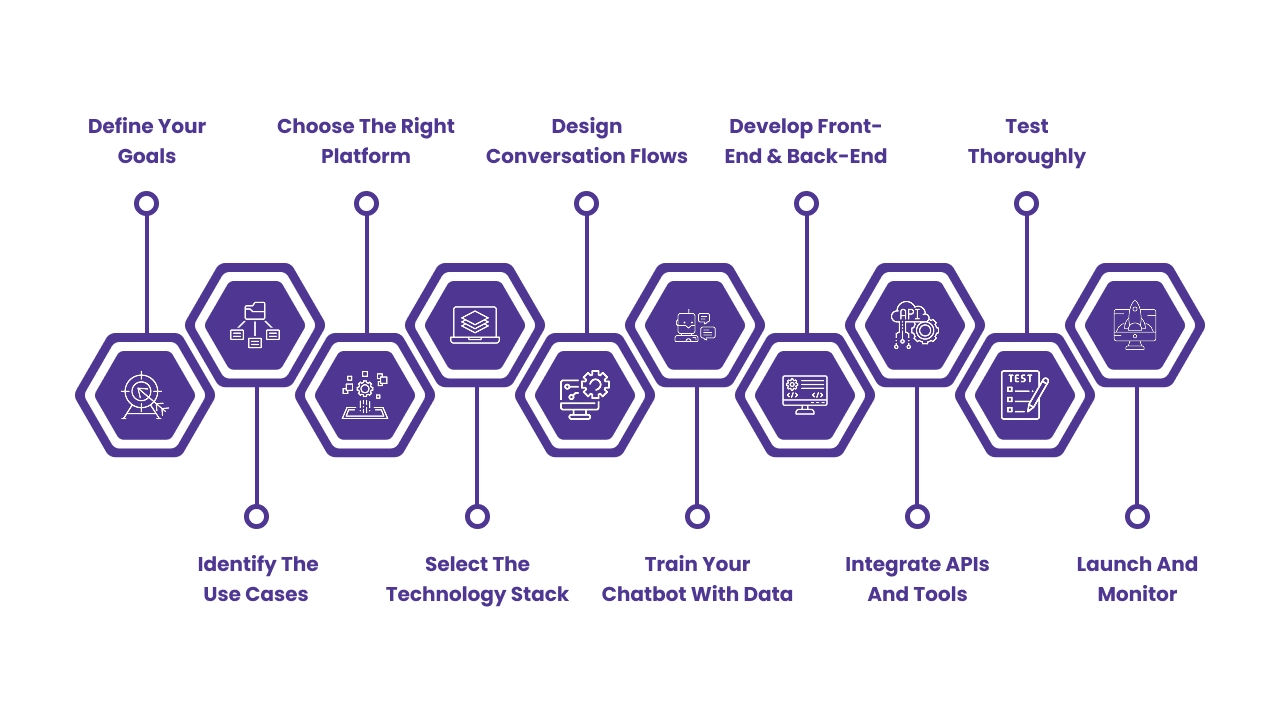
Developing an AI chatbot involves a strategic, step-by-step process. Here's a detailed breakdown:
1. Define Your Goals
Start by identifying your business goals. Are you building a chatbot for customer service, lead generation, appointment booking, or e-commerce?
2. Identify the Use Cases
Narrow down the chatbot’s primary functions. Will it answer FAQs, help in onboarding, or automate sales?
3. Choose the Right Platform
Decide where your chatbot will operate – website, mobile app, messaging platforms, or all.
4. Select the Technology Stack
Pick technologies such as:
- NLP Engines: Google Dialogflow, Microsoft LUIS, IBM Watson, OpenAI
- Frameworks: Rasa, Botpress, Microsoft Bot Framework
- Languages: Python, Node.js, JavaScript
- Databases: MongoDB, PostgreSQL
- Cloud: AWS, Azure, Google Cloud
5. Design Conversation Flows
Create flowcharts and user journeys that cover all possible interactions. Use conversation design tools like Botmock or Voiceflow.
6. Train Your Chatbot with Data
Feed the chatbot with sample conversations, intents, and entity data to improve accuracy.
7. Develop Front-End & Back-End
- Front-End: UI/UX design, chat interface, mobile/web integration
- Back-End: API development, server management, database setup
8. Integrate APIs and Tools
Integrate your chatbot with CRM, live chat, email systems, or analytics tools.
9. Test Thoroughly
Perform unit, integration, usability, and performance testing. Use real users for beta testing.
10. Launch and Monitor
Deploy your chatbot and monitor interactions. Continuously train and update it using collected data.
Chatbots vs Voice Assistants: What’s the Difference?
While chatbots and voice assistants both use AI to facilitate human-computer interaction, they differ significantly in how users interact with them, their use cases, and underlying technologies.
1. Mode of Interaction
- Chatbots: Primarily text-based; users interact via typing.
- Voice Assistants: Operate through speech; users interact by speaking.
2. Platforms
- Chatbots: Commonly integrated into websites, mobile apps, and messaging platforms (e.g., WhatsApp, Facebook Messenger).
- Voice Assistants: Found in smart speakers (like Alexa, Google Home), smartphones (Siri), and IoT devices.
3. Technology Used
- Chatbots: Focus on NLP (Natural Language Processing) and rule-based logic or AI/ML models.
- Voice Assistants: Combine NLP with ASR (Automatic Speech Recognition) and TTS (Text-to-Speech) technologies.
4. Use Cases
- Chatbots: Ideal for customer support, lead generation, e-commerce, and booking systems.
- Voice Assistants: Great for hands-free tasks, smart home control, navigation, and reminders.
5. User Experience
- Chatbots: Better suited for multitasking environments.
- Voice Assistants: Offer a more natural, human-like experience in hands-free situations.
Challenges in AI Chatbot Development
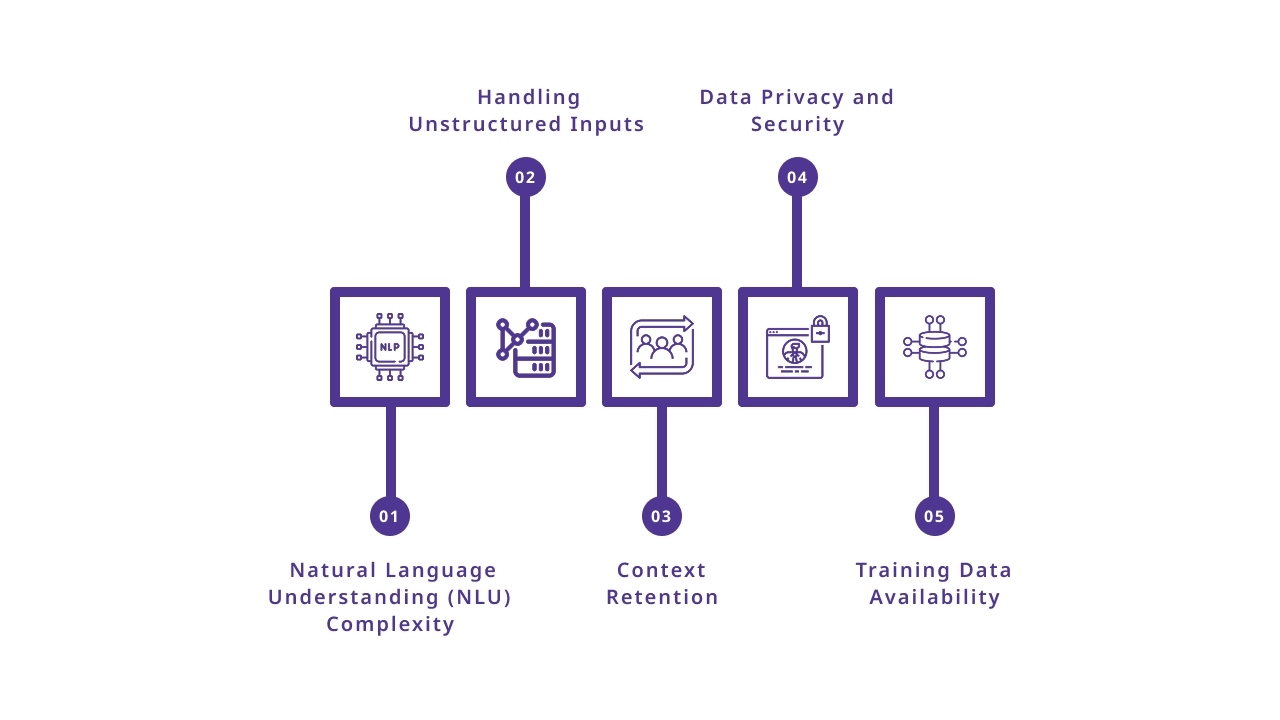
While AI chatbots offer immense value, developing them comes with several challenges that businesses and developers must address to ensure a smooth and effective implementation. Here are some key hurdles:
1. Natural Language Understanding (NLU) Complexity
Chatbots often struggle to accurately interpret user intent, especially when users use slang, sarcasm, or ambiguous phrases.
2. Handling Unstructured Inputs
Unlike structured commands, human language is diverse. Managing unexpected or off-topic responses is a significant challenge.
3. Context Retention
Maintaining context in multi-turn conversations is complex, requiring advanced memory models and contextual AI.
4. Data Privacy and Security
AI chatbots process sensitive user data. Ensuring compliance with regulations like GDPR and implementing encryption is crucial.
5. Training Data Availability
Obtaining quality datasets for training the chatbot can be time-consuming and expensive.
Overcoming these challenges requires expertise in AI, robust planning, and a reliable development partner like True Value Infosoft.
Best Practices for AI Chatbot UX/UI Design
Designing a great user experience (UX) and user interface (UI) for an AI chatbot is critical to ensuring seamless interactions, user satisfaction, and business success. Here are some best practices to follow:
1. Keep the Interface Clean and Simple
Avoid clutter. Use minimal design with clear text, icons, and buttons to keep users focused on the conversation.
2. Use a Conversational Tone
Make the chatbot sound natural and human-like. This builds trust and improves user engagement.
3. Guide Users with Quick Replies
Offer buttons or predefined options to make it easier for users to respond without typing.
4. Show Typing Indicators and Delays
Simulate human typing with slight delays and indicators to create realistic conversations.
5. Support Multi-Turn Conversations
Ensure the chatbot remembers the context of previous messages to maintain coherent dialogues.
6. Ensure Mobile Responsiveness
Design chatbot UI to work smoothly across all devices—especially smartphones.
7. Include Visual Elements
Enhance UX with images, emojis, carousels, and icons for better clarity and interaction.
8. Fail Gracefully
When the chatbot doesn't understand, offer helpful suggestions or escalate to a human agent.
9. Accessibility Matters
Use readable fonts, contrasting colors, and screen reader compatibility for inclusiveness.
Following these UX/UI principles can turn your AI chatbot into a delightful and effective digital assistant.
Why Choose True Value Infosoft for AI Chatbot Development?
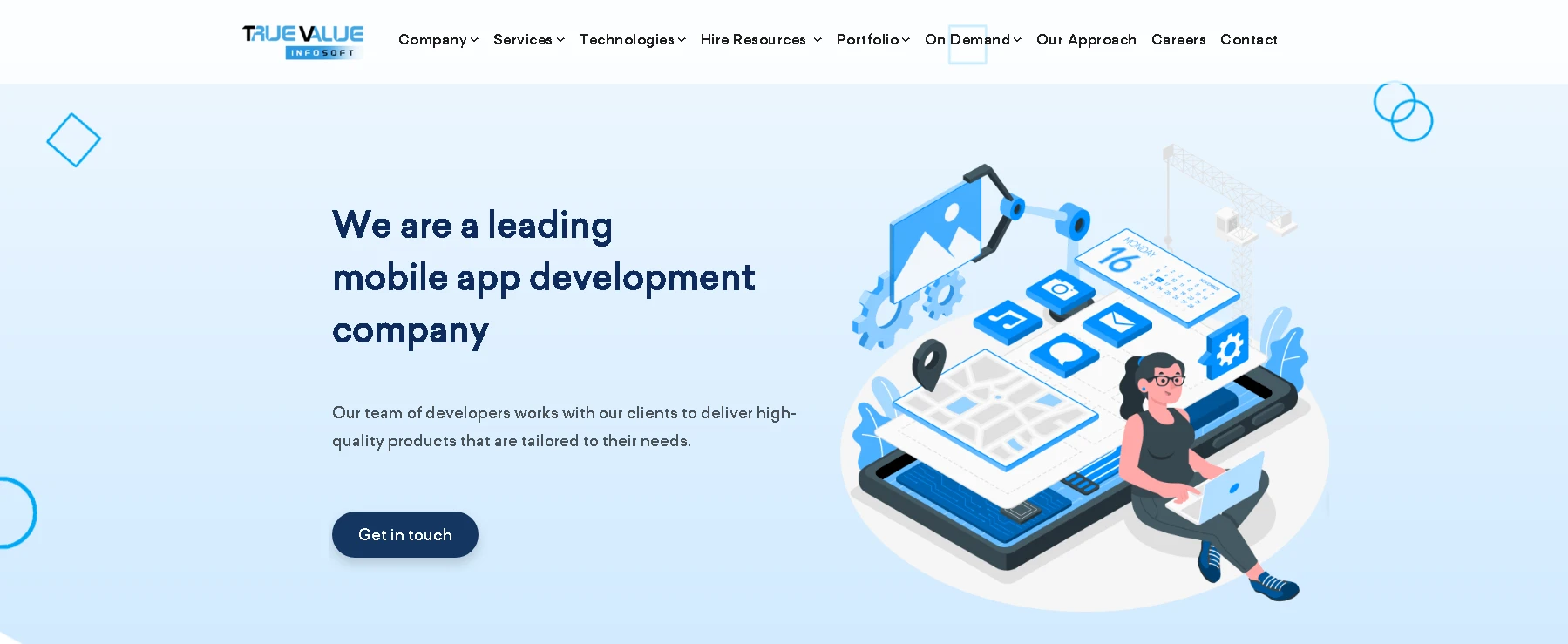
True Value Infosoft, the best app development company in India, has positioned itself as a leader in AI chatbot development. Here’s why startups, SMEs, and enterprises trust us:
Expert AI & ML Team
Our in-house AI engineers and data scientists have hands-on experience in building advanced conversational agents using NLP, ML, and generative AI models.
Customized Chatbot Solutions
We don’t believe in one-size-fits-all. Every chatbot we build is tailored to suit your specific business goals and user needs.
End-to-End Services
From ideation to design, development, deployment, and support — we provide full-cycle chatbot development services.
Cutting-Edge Technology Stack
We leverage the latest technologies like GPT-4, BERT, Rasa, and Dialogflow to build robust, intelligent bots.
24/7 Support & Maintenance
We offer round-the-clock technical support and performance monitoring to ensure your chatbot remains up-to-date and bug-free.
Proven Track Record
With 10+ years in the tech industry and 500+ successful projects, True Value Infosoft is a name businesses trust globally.
Conclusion
AI chatbots are revolutionizing how businesses communicate, engage, and serve their customers in 2025. Whether it's automating customer support, enhancing lead conversion, or improving user satisfaction — the possibilities are endless. But to harness the full power of AI chatbots, it's critical to work with an experienced and reliable development partner.
True Value Infosoft, the best app development company in India, has the tools, talent, and vision to turn your chatbot idea into a powerful digital solution. From startups looking for basic customer support bots to enterprises aiming for AI-driven automation, we’re here to make your chatbot development journey seamless and successful.
Ready to build your AI chatbot and lead the conversation revolution?
FAQs
The cost of AI chatbot development in 2025 ranges from $5,000 to $100,000, depending on complexity, features, integrations, and platform (web, mobile, or messaging apps).
Development time can vary from 2 weeks to 6 months, depending on the chatbot's scope, technology stack, and desired functionality.
Yes, modern AI chatbots can seamlessly integrate with CRMs like Salesforce, HubSpot, Zoho, and others to manage customer data and automate workflows.
With proper encryption, authentication, and data compliance measures (like GDPR), AI chatbots can be made highly secure for handling sensitive user information.
Not necessarily. Once developed, chatbot platforms often offer no-code dashboards for managing conversations, FAQs, and analytics without technical skills.
